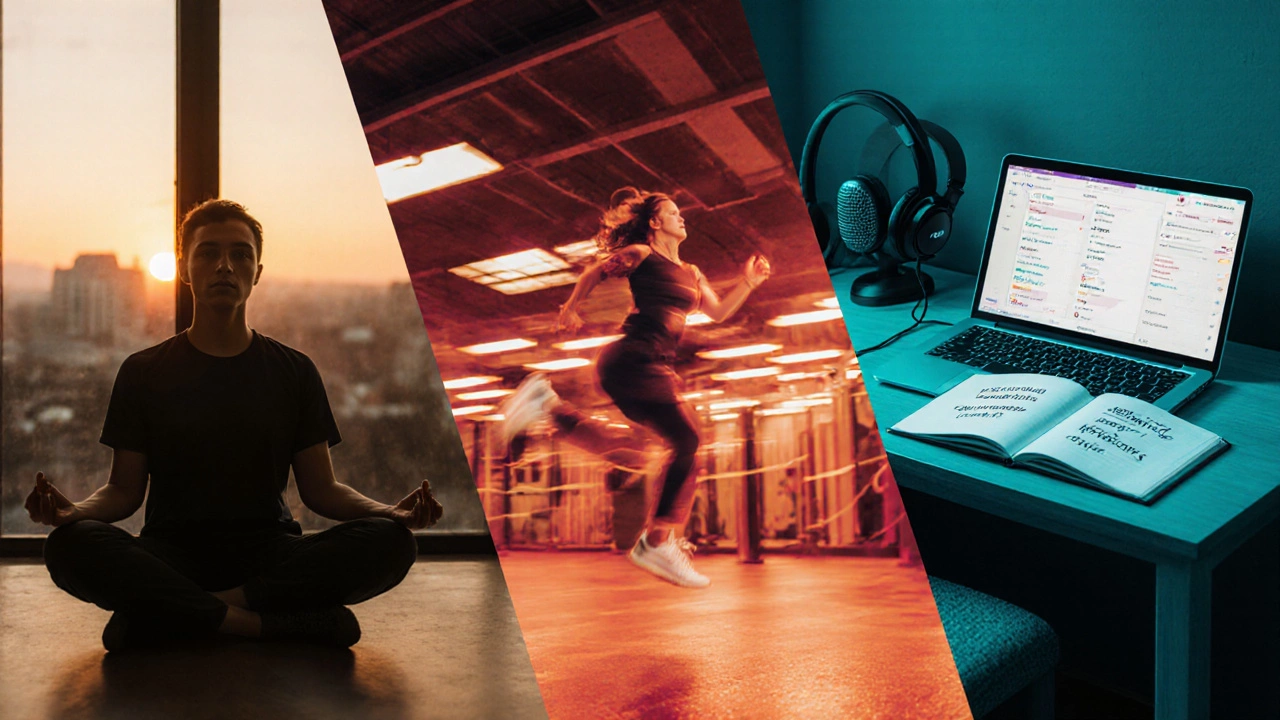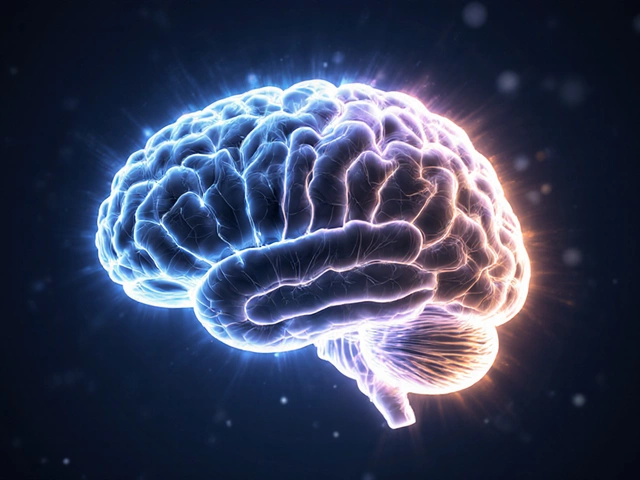Spaced Repetition Scheduler
Calculate Review Intervals
Optimize your language learning with spaced repetition. Enter your current review interval and how well you remembered the material.
Enter your current interval and recall quality to see the optimal next review time.
Quick Takeaways
- Neuroplasticity lets you reshape brain pathways at any age.
- Use spaced repetition, chunking, and immersive listening to cement new words.
- Sleep, physical exercise, and mindfulness are non‑language habits that boost retention.
- Track progress with simple metrics like recall speed and error rate.
- Build a 20‑minute daily routine; consistency beats marathon study sessions.
Want to know if you can literally rewire brain for language learning? The answer is yes-your brain is a malleable organ that constantly reshapes itself based on what you feed it. This guide breaks down the science behind brain plasticity, then shows step‑by‑step how to apply proven techniques so you can pick up a new language faster and keep it for life.
What is Neuroplasticity?
Neuroplasticity is a process where neurons form new connections or strengthen existing ones in response to learning, experience, or injury. First described in the late 19th century, modern imaging proves that even adult brains can create fresh synaptic pathways when challenged repeatedly. Two main mechanisms drive this: synaptogenesis (new synapse formation) and synaptic pruning (removing unused links). The more you practice a skill, the thicker the neural “highways” become, making retrieval faster and less effortful.
How the Brain Learns a Language
When you hear a foreign word, the auditory cortex parses the sound, then the superior temporal gyrus maps it to meaning. Working memory holds the new phoneme and its translation for a few seconds while you decide how to use it. Repeating the word activates the basal ganglia, which stores procedural memory for pronunciation. Over time, these patches integrate into the language network, shifting from effortful recall to automatic fluency.
Key brain regions involved:
- Broca’s area: speech production and grammar.
- Wernicke’s area: comprehension.
- Hippocampus: initial vocabulary storage.
- Prefrontal cortex: attention and executive control.
Brain‑Optimized Learning Techniques
Below are the six evidence‑backed habits that directly stimulate neuroplastic change for language acquisition.
1. Spaced Repetition
Spaced Repetition is a review schedule that gradually increases the interval between each exposure to a word or phrase. By revisiting material just before it fades, you trigger long‑term potentiation, solidifying the memory trace. Apps like Anki or Quizlet automate the timing, but you can also use a simple paper system: Day 1, Day 3, Day 7, Day 14, etc.
2. Chunking
Chunking groups individual words or sounds into meaningful units, reducing cognitive load on working memory. Instead of memorizing "I am going to the market" word‑by‑word, learn the phrase as a single chunk. This mirrors how native speakers store expressions, making retrieval smoother.
3. Immersive Listening
Immersive Learning places you in a context where the target language is the primary input, forcing the brain to adapt naturally. Watch movies, listen to podcasts, or change your phone’s language setting. The brain’s auditory‑language pathways fire repeatedly, creating stronger synaptic links.
4. Sleep and Consolidation
During deep sleep, the hippocampus replays the day’s linguistic experiences, transferring them to the neocortex for long‑term storage. Aim for 7‑9 hours and consider a short “nap‑review”-study right before a 90‑minute sleep cycle to maximize consolidation.
5. Physical Exercise
Cardiovascular workouts raise brain‑derived neurotrophic factor (BDNF), a protein that fuels synapse growth. A 30‑minute brisk walk before a study session can raise alertness and boost memory encoding.
6. Mindfulness & Attention Training
Mindfulness improves sustained attention, allowing the brain to focus on language inputs without distraction. Simple breathing exercises for 5 minutes before you start reduce cortisol, which otherwise hampers hippocampal function.

Comparison: Traditional vs Brain‑Optimized Language Study
| Aspect | Traditional | Brain‑Optimized |
|---|---|---|
| Review Timing | Massed cramming | Spaced repetition intervals |
| Memory Load | Single words | Chunked phrases |
| Context | Isolated drills | Immersive audio/video |
| Physical State | Studied sitting still | Pre‑study exercise + adequate sleep |
| Attention | Variable focus | Mindfulness priming |
Designing Your 20‑Minute Daily Brain‑Training Routine
- 5 minutes - Mindfulness Warm‑up: Sit quietly, focus on breath, gently bring attention back when it wanders.
- 5 minutes - Physical Boost: Do jumping jacks or a brisk walk to raise BDNF levels.
- 5 minutes - Spaced Review: Open your flashcard app, review the day’s target chunks.
- 3 minutes - Chunk Practice: Say each phrase aloud, then blend with the next phrase in a single sentence.
- 2 minutes - Immersive Wrap‑up: Listen to a short podcast excerpt, noting any familiar words.
Stick to the same time slot each day-habit formation is itself a plasticity driver.
Common Pitfalls and How to Fix Them
- Skipping Sleep: You’ll notice rapid forgetting. Remedy: schedule a short power nap after review.
- Over‑Cramming: Leads to shallow encoding. Switch to spaced intervals.
- Ignoring Pronunciation: Audio‑motor pathways stay weak. Record yourself and compare to native speakers.
- Multitasking: Divides attention, slowing synaptic strengthening. Turn off notifications during the 20‑minute block.
Measuring Progress Without Test Anxiety
Use simple, low‑pressure metrics:
- Recall Speed: Time how long it takes to translate a set of 10 words.
- Error Ratio: Count mistakes during a 2‑minute spoken recall.
- Chunk Fluency: Record a 30‑second story using learned chunks; note pauses.
Plot these numbers weekly. A steady downward trend in time and errors means your neural pathways are thickening.
Next Steps: Resources to Keep the Momentum
- Anki - free spaced‑repetition flashcard app.
- “Fluent Forever” by Gabriel Wyner - a deep dive into chunking and pronunciation.
- BBC World Service - daily news podcasts for immersive listening.
- Headspace - guided 5‑minute mindfulness sessions.
- 30‑minute morning jog playlists on Spotify.
Pick two from the list, integrate them into your 20‑minute routine, and watch your brain reshape itself in real time.
Frequently Asked Questions
Can adults truly change brain structure for language?
Yes. Studies using MRI show that adults who engage in intensive language practice develop larger gray‑matter volume in language‑related regions after just a few months.
How long does it take to see noticeable improvement?
Most learners notice smoother recall after 3‑4 weeks of daily spaced‑repetition combined with immersive listening, provided they get enough sleep.
Do I need fancy software?
No. A notebook for chunking, a free flashcard app, and any podcast are enough. The key is consistency, not technology.
Will exercise really help language learning?
Aerobic activity boosts BDNF, which enhances synaptic growth. A short walk before study has been shown to improve retention by up to 15%.
How much sleep is enough for memory consolidation?
Aim for 7‑9 hours per night. A 90‑minute nap right after a study session can act as a mini‑consolidation window.


